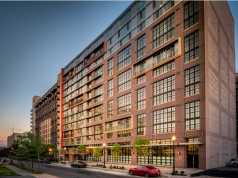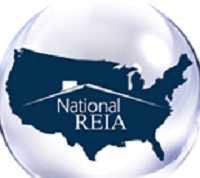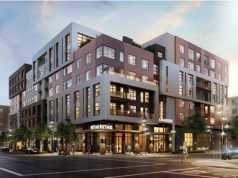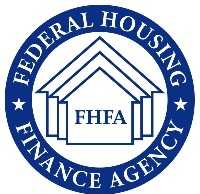The American Institute of Architects Select Ten Recipients for the 2014 Housing Awards
Washington, D.C. – April 7, 2014 – (RealEstateRama) — The American Institute of Architects (AIA) has selected ten recipients for the 2014 Housing Awards. The AIA’s Housing Awards program, now in its 14th year, was established to recognize the best in housing design and promote the importance of good housing as a necessity of life, a sanctuary for the human spirit and a valuable national resource.
The jury recognized projects in four award categories: One/Two Family Custom Housing, One/Two Family Production Housing (none selected this year), Multifamily Housing and Special Housing.
The descriptions below give a brief summary of the projects. You can learn more about these projects by clicking on the name of the project/firm name.
One/Two Family Custom Housing
The One and Two Family Custom Residences award recognizes outstanding designs for custom and remodeled homes for specific client(s).
Informal House; South Pasadena, CA
Koning Eizenberg Architecture, Inc.
This house was custom designed for a family of four. The idea for this house was not to blur the distinction from indoor to outdoor with big walls of glass, but to intensify the quality of each. Sustainable choices facilitate the client’s interest in indoor outdoor living. Green roofs insulate the lower roofs while they strengthen the articulation between activity spaces and service spaces. Exposed materials with a high thermal mass and polished concrete floors take advantage of the significant daily temperature swing in this coastal climate. A cool white roof, easily accessed for cleaning minimizes solar gain, critical in this sunny climate.
Kicking Horse Residence; British Columbia
Bohlin Cywinski Jackson
The clients desired a weekend gathering place for their active family of five that would allow for flexibility to accommodate larger groups of family and friends and provide a direct connection to the outdoors for seasonal recreation. The design inherently reduces exposure to natural drainage patterns by limiting the building footprint. The architects worked directly with the contractor to detail the below grade drainage system to perform most efficiently for the soils on site. The evocative forms of the house are oriented to capture daylight and views to the stunning mountain peaks above, but also act to effectively shed snow from the massive storms that move through the area.
Park Passive; Seattle
NK Architects
This home’s ‘passive survivability’ lies in its ability to capture and retain heat. In the instance of a power outage during the winter, the indoor air temperature would remain steady significantly longer than a traditionally built house without the opening of doors and windows. The home is built to passive house standards and is the city’s first to be certified by the Passive House Academy. By creating both vertical and horizontal spatial connections, the design maximizes the shallow floor plate. This home celebrates affordability through conservation and a reduction in monthly utility bills. It serves as a showcase that living in an energy efficient home is comfortable too.
Sol Duc Cabin; Seattle
Olson Kundig Architects
The owner desired a compact, low-maintenance, virtually indestructible building to house himself and his wife during fishing expeditions. Composed of two levels, the cabin’s entry, dining and kitchen areas are located on the lower floor while a sleeping loft with minimal shelving hovers above. A cantilevered steel deck extends from the lower level, providing unimpeded views of the river. Most of the structure; the steel frame and panels, the roof, shutters, and stairs were prefabricated off-site, thereby reducing on-site waste and site disruption. The cabin’s rugged surface and raw materiality respond to the surrounding wilderness while its verticality provides a safe haven during occasional floods from the nearby river.
Topo House; Wisconsin
Johnsen Schmaling Architects
Echoing the dramatic surface deformations that occur when wind blows over the crops and grasses of the surrounding prairie, the building skin, a high-performance ventilated rainscreen system with concrete fiber panels, is organized by 190 individually shaped, black-anodized aluminum fins of interrelated contracting and expanding shapes. Depending on the time of the day and the angle from which they are viewed, the fins create a constantly changing veil whose shifting geometry subverts the volumetric simplicity of the house itself. The house is built around a palette of sustainable and highly durable materials and features an envelope that is designed to endure the continuous onslaught of the Midwest’s severe weather conditions and extreme temperature fluctuations.
Multifamily Living
The Multifamily Housing award recognizes outstanding apartment and condominium design. Both high- and low-density projects for public and private clients were considered. In addition to architectural design features, the jury assessed the integration of the building(s) into their context, including open and recreational space, transportation options and features that contribute to livable communities.
1221 Broadway; San Antonio
Lake|Flato Architects
This project has served as a catalyst for nearby urban redevelopment and neighborhood revitalization. Along with the complete makeover of an abandoned superstructure, passive solutions, including open breezeways carefully oriented to cool the circulation corridors, came with understanding San Antonio’s local climate. The project design reflects a common sense and regional response to climatic conditions. The project achieved a HERS index of 68, performing 32% better than a new multi-family project built to code. Its energy use intensity (EUI) is 30% better than the national average for large multi-family project types.
Cherokee Studios; Los Angeles
Brooks + Scarpa
The main architectural feature of this project is the building’s owner-controlled operable double façade system. By allowing the occupant to adjust the operable screens of the building façade, the facade is virtually redesigned “live” from within the space, reflecting the occupants of the building within, in real time. Cherokee is 40% more energy efficient than California’s Title 24, the most demanding energy code in the U.S. Passive solar design strategies and proper building orientation, using the central courtyard between the two residential structures, allows for day lighting on both sides of every unit and shading, while allowing prevailing breezes to fully pass through the units for natural ventilation. The green roof provides occupants the ability to enjoy nature while keeping the building better insulated, cleaning the air, and reducing storm water runoff.
Merritt Crossing Senior Apartments; Oakland, CA
Leddy Maytum Stacy Architects
This project is a high-density residential development with a mix of studios; one-bedroom and two-bedroom apartments that were thoughtfully fit into its downtown Oakland site between an inner city neighborhood and a freeway. The south side of the building facing the freeway has a layered façade that provides solar and acoustical mitigation while creating a varied experience for passing drivers. To control operating costs for the non-profit owner, the project was constructed for enhanced durability, weather protection and energy use. Dedicated to high environmental standards, the developer focused on healthy living and energy savings while electing to test a combination of sustainability rating systems.
Specialized Housing
The Special Housing award recognizes outstanding design of housing that meets the unique needs of other specialized housing types such as single room occupancy residences (SROs), independent living for the disabled, residential rehabilitation programs, domestic violence shelters, and other special housing.
28th Street Apartments; Los Angeles
Koning Eizenberg Architecture, Inc.
This project restores and adds to a distressed historic building (a former YMCA). The project now houses two synergistic programs run by two nonprofits that co-purchased the building: The neighborhood youth training and employment program and supportive housing (serving youth exiting foster care, the mentally ill and the chronically homeless.) Supportive services are offered on site and residents have access to a roof garden, laundry and lounge. The historic front entry of the structure forms a neighborhood porch where community kids gather while the new addition creates a less formal side entry to the housing units above. The existing historic building spawned an efficient urban strategy on a small vacant sliver of land on the back of the building to add square footage for new updated unit types while not triggering costly parking.
Sweetwater Spectrum Community; Sonoma, CA
Leddy Maytum Stacy Architects
In 2009, a group of families, autism professionals and community leaders founded the nonprofit organization Sweetwater Spectrum to meet the extraordinary need for appropriate, high-quality, long-term housing for adults with autism, offering life with purpose and dignity for residents. This project, created to be replicated nationwide, integrates autism specific design, universal design and sustainable design, and provides a permanent home for 16 adults with autism. Spaces were designed to reduce sensory stimulation (ambient sound, visual patterns, odors, etc.) and to create a simple, predictable domestic environment. Safety and security are paramount and healthy, durable materials are utilized throughout. Individuals may customize their personal living spaces to accommodate their preferences and particular needs.
The jury for the 2014 Housing Awards includes: Nancy Ludwig, FAIA, Chair, ICON architecture, inc.; David Barista, Building Design+Construction; Louise Braverman, FAIA, Louise Braverman Architect and Jean Rehkeamp Larson, AIA, Rehkamp Larson Architects, Inc. For high resolution images, contact Matt Tinder.
About The American Institute of Architects
Founded in 1857, members of the American Institute of Architects consistently work to create more valuable, healthy, secure, and sustainable buildings, neighborhoods, and communities. Through nearly 300 state and local chapters, the AIA advocates for public policies that promote economic vitality and public well being. Members adhere to a code of ethics and conduct to ensure the highest professional standards. The AIA provides members with tools and resources to assist them in their careers and business as well as engaging civic and government leaders, and the public to find solutions to pressing issues facing our communities, institutions, nation and world. Visit www.aia.org.
Contact: Matt Tinder
202-626-7462
http://twitter.com/AIA_Media















